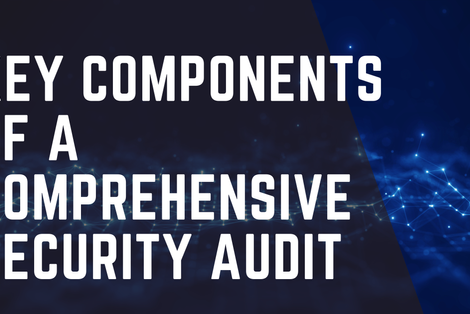There are lots of terms floating around the cybersecurity community that are ill-defined.
Even "cybersecurity" is an umbrella term. Much like physical security for your house can refer to anything from smoke alarms to door locks to video monitoring and everything in between, cybersecurity covers a broad spectrum.
Using a term like "advanced cybersecurity" makes the problem worse. This article will break down what advanced cybersecurity means and whether your business would benefit from advanced cybersecurity.
What is Advanced Cybersecurity?
Well, there isn't a universal answer. The term suggests that a company's cybersecurity is superior without actually explaining how it's superior.
The best way to describe the term "advanced" regarding cybersecurity is to compare it to "organic" in grocery stores. The word applies to many tools without explaining what it means or what makes the tool advanced.
In addition, advanced typically refers to the type of threats rather than cybersecurity. The good news? There is a clear definition of advanced threats.
Advanced Cybersecurity Threats
Advanced cyber threats are stealthy. They can enter your system and infect it while evading detection. They are superior, or more advanced, than the security measures in place (hence the term "advanced").
Advanced threats are targeted—customized to the specific user or computer. An attacker will study your habits (the sites you visit, the content you download, etc.) to develop a threat to exploit a specific vulnerability.
"Basic" cyberattacks are a one size fits all strategy. It's no longer a blanket approach to an attack. Attackers often have a deeper understanding of their target.
What To Look For
Instead of focusing on advanced tools, let's shift the discourse to advancing your cybersecurity posture.
An effective cybersecurity posture focuses on determining, identifying, and mitigating potential threats and how quickly you can do that. It also has to do with training, which is often ignored. Cybersecurity training is a base form of advancement that organizations can do.
It's like building a house: once you create the foundation, you can move on to the next steps. If you're already doing the basics—regular patches and updates, frequent backups, training, and multifactor authentication—it's time to think about the next steps for advancement.
The challenging part about a cybersecurity posture is that it's not a one-size-fits-all. Different organizations will have specific threats. Thus, the organization must construct its posture to address those threats. Not all advanced methods make sense, so you also need to think about advancing in meaningful ways.
That's where strategy is essential. Adding a bunch of tools won't improve your posture.
For example, Big Company requested a cybersecurity audit. From the beginning, there were multiple redundancies in tools. By consolidating their tools to focus on tools that worked best for their particular organization, the company could shave approximately $250,000 from its bottom line.
How Anteris can help
Who is strategizing with you? And if they're not doing it well, are you bringing it up?
At Anteris, we make security a top priority. Our security services support your business and protect your data from outside threats as cybersecurity professionals.
Network security isn't a one size fits all thing. As a strategic managed IT service provider, we will identify and implement the best technology to protect your organization. Every business is unique, and cybersecurity plans will reflect that. We're here to help you assess where you are now and work with you to figure out your next move, whether starting with the basics or building out a more robust plan.
And it's not something we just set and forget. We continuously improve the posture of our Clients as their organizations—and the threats targeting them—evolve.
While there is no guaranteed protection against a threat, we also have best practices for recovery in the event of a security breach.
Let us make your technology freeing, not frustrating.
Frequently Asked Questions
What specific examples of advanced cybersecurity tools or technologies are currently considered best-in-class, and how do they differ from traditional tools?
Advanced cybersecurity tools often incorporate AI and machine learning for real-time threat detection and response, unlike traditional tools that may rely more on predefined rules and signatures. Best-in-class examples include next-generation firewalls (NGFWs), endpoint detection and response (EDR) solutions, and security information and event management (SIEM) systems that offer integrated, intelligent threat detection and response capabilities.
How can organizations effectively measure the improvement in their cybersecurity posture after implementing advanced cybersecurity strategies?
Measuring improvement in cybersecurity posture can be achieved through various metrics, such as the reduction in the number of successful attacks, the time to detect and respond to threats, and the impact of incidents on operations. Organizations might also conduct regular security assessments and audits to evaluate the effectiveness of their cybersecurity strategies.




